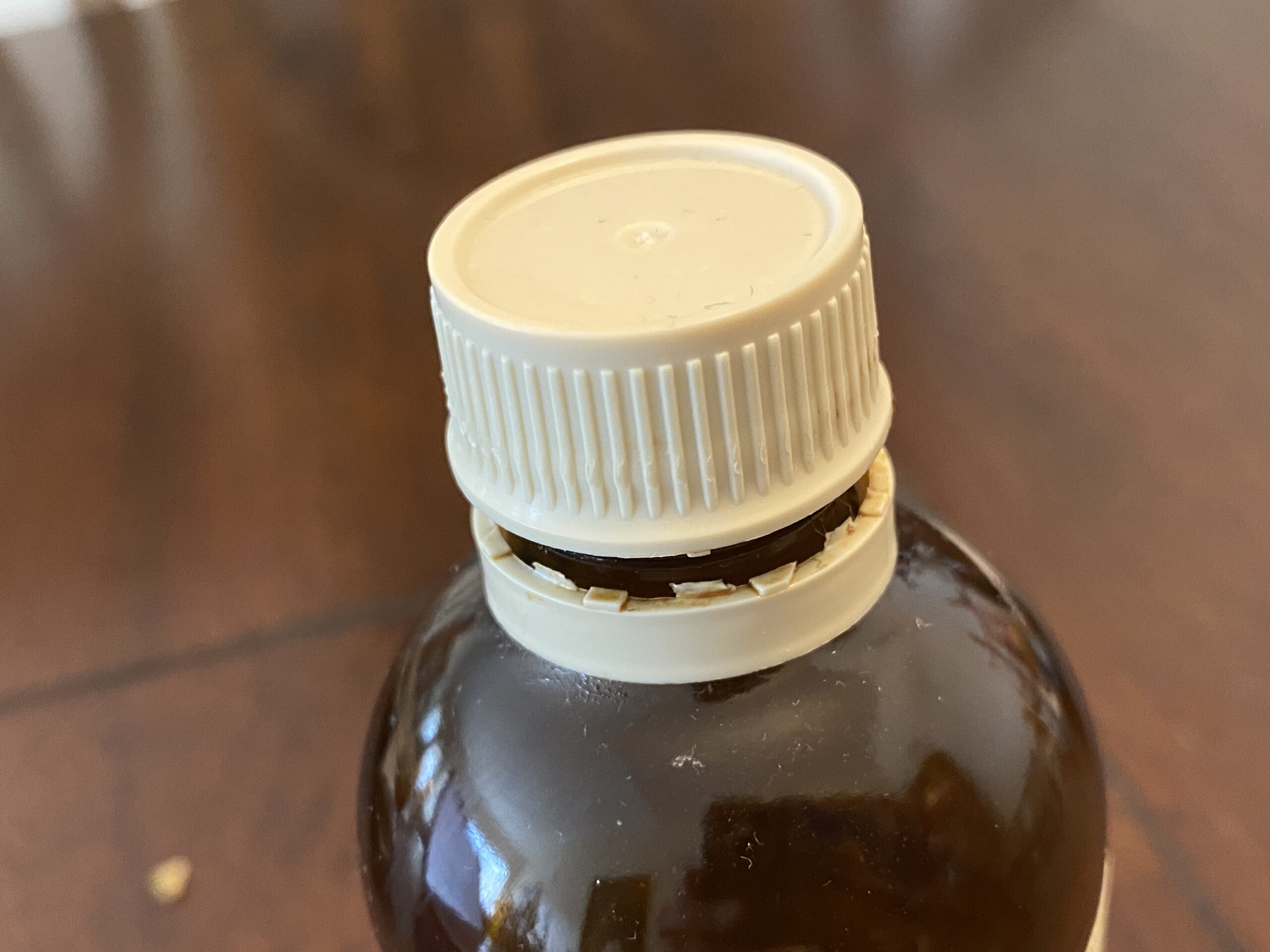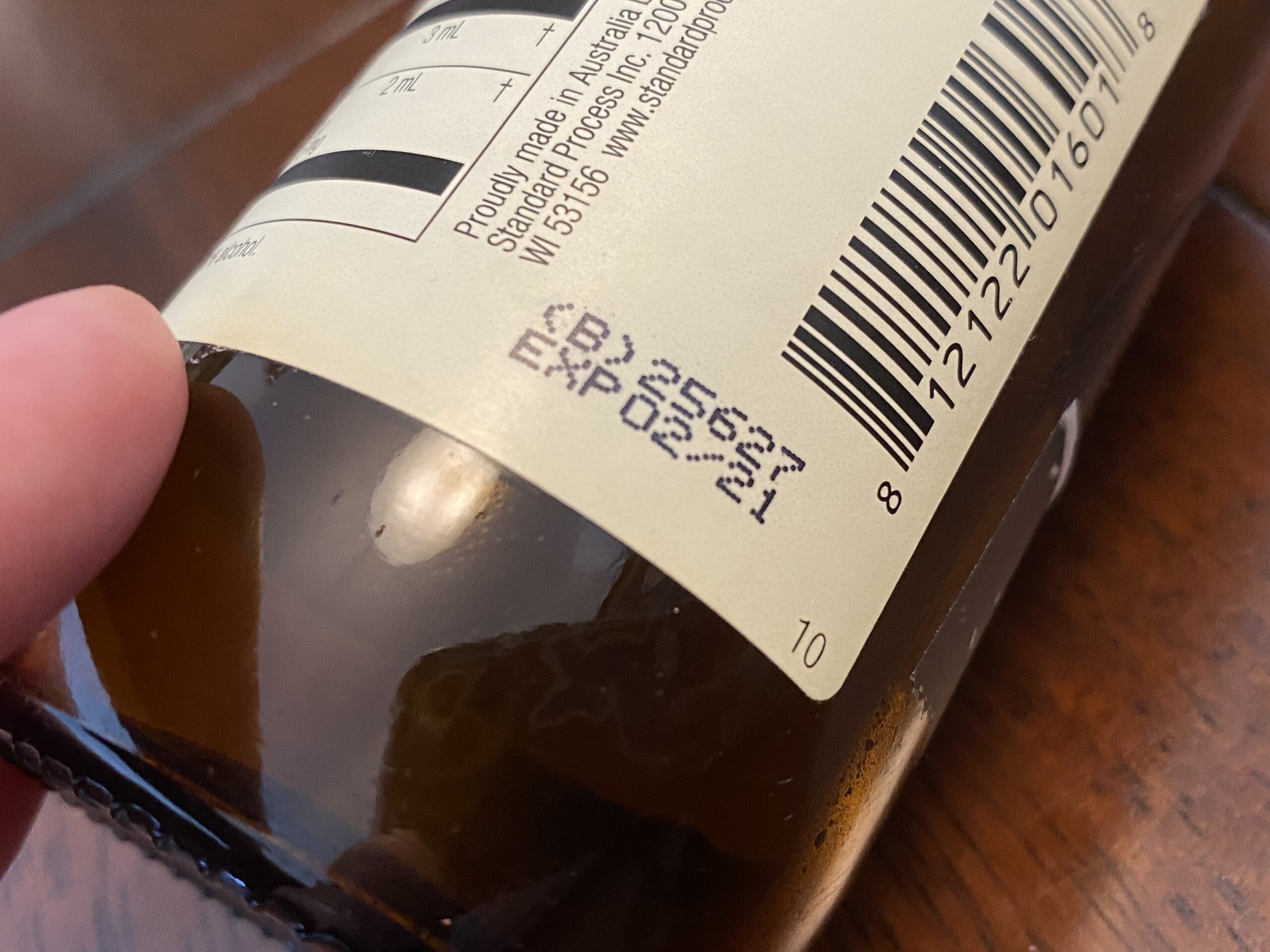Brown Glass Supplement Bottle for MediHerb Standard Process herbal supplement (Australia): 112 ppm Lead + 11 ppm Cadmium in the glass (typical of supplement bottles).

 Reading #1) on the brown glass
Reading #1) on the brown glass
60-second reading
- Lead (Pb): 112 +/- 7 ppm
- Cadmium (Cd): 11 +/- 2 ppm
- Arsenic (As): non-detect
- Mercury (Hg): non-detect
- Bromine (Br): non-detect
- Chromium (Cr): non-detect
- Iron (Fe): 3,008 +/- 92 ppm
- Zinc (Zn): 47 +/- 7 ppm
- Zirconium (Zr): 268 +/- 6 ppm
- Niobium (Nb): 296 +/- 9 ppm
- Indium (In): 8 +/- 3 ppm
- Tin (Sn): 24 +/- 4 ppm
- Barium (Ba): 90 +/- 14 ppm
- No other metals detect in consumer goods mode.
Reading #2) on the plastic lid
60-second reading
- Lead (Pb): non-detect
- Cadmium (Cd): non-detect
- Arsenic (As): non-detect
- Mercury (Hg): non-detect
- Bromine (Br): non-detect
- Chromium (Cr): 151 +/- 35 ppm
- Iron (Fe): 106 +/- 16 ppm
- Copper (Cu): 15 +/- 9 ppm
- Zinc (Zn): 36 +/- 5 ppm
- Titanium (Ti): 7,960 +/- 234 ppm
- Antimony (Sb): 39 +/- 11 ppm
- Barium (Ba): 154 +/- 51 ppm
- No other metals detect in consumer goods mode.
For those new to this website:
Tamara Rubin is a Federal-award-winning independent advocate for consumer goods safety and a documentary filmmaker. She is also a mother of Lead-poisoned children. Tamara’s sons were acutely Lead-poisoned in August of 2005. She began testing consumer goods for toxicants in 2009 and was the parent-advocate responsible for finding Lead in the popular fidget spinner toys in 2017. Tamara uses XRF testing (a scientific method used by the U.S. Consumer Product Safety Commission) to test consumer goods for toxicants (specifically heavy metals), including Lead, Cadmium, Mercury, Antimony, and Arsenic. All test results reported on this website are science-based, accurate, and replicable. Items are tested multiple times, to confirm the test results for each component tested. Please click through to this link to learn more about the testing methodology used for the test results discussed and reported on this website.





Never Miss an Important Article Again!
Join our Email List





Have you ever found a brown or green tinted bottle that is non-detect for lead/cadmium/arsenic? Folks say it is important to bottle certain things (olive oil. essential oils, etc.) in tinted glass, but I think the real solution is to bottle them in clear glass and then sell that clear glass bottle in a box to keep the light out… but that would cost money…also most folks would toss the box rather than continue to store the bottle in the box at home…
Is the lead likely to be leaching in supplement bottles such as this? The vitamin D drops that I give my kids (and use myself) is in a brown, glass bottle. Living in Minnesota makes it imperative that we supplement with vitamin D during the winter months. I did a lot of research to choose a vitamin D supplement that ONLY contained coconut oil and vitamin D without all the added fillers. I also don’t love the idea of oil stored in plastic… where does that leave us?
I wonder about this as well. My thoughts are clear glass seems to be the safer option and if keeping it out of light is the best way to ensure stability then I am capable of doing so as a responsible adult. I would love to hear Tamara’s educated insight on this as well!
I’m interested in knowing more about that, too!
I’m thinking about all of the products that I’ve used that are in brown or green glass bottles… Thank you, Tamara, for raising our awareness. These days, I’m only choosing clear glass except for one supplement company – Vimergy. I plan to send Tamara one of their tincture bottles soon.